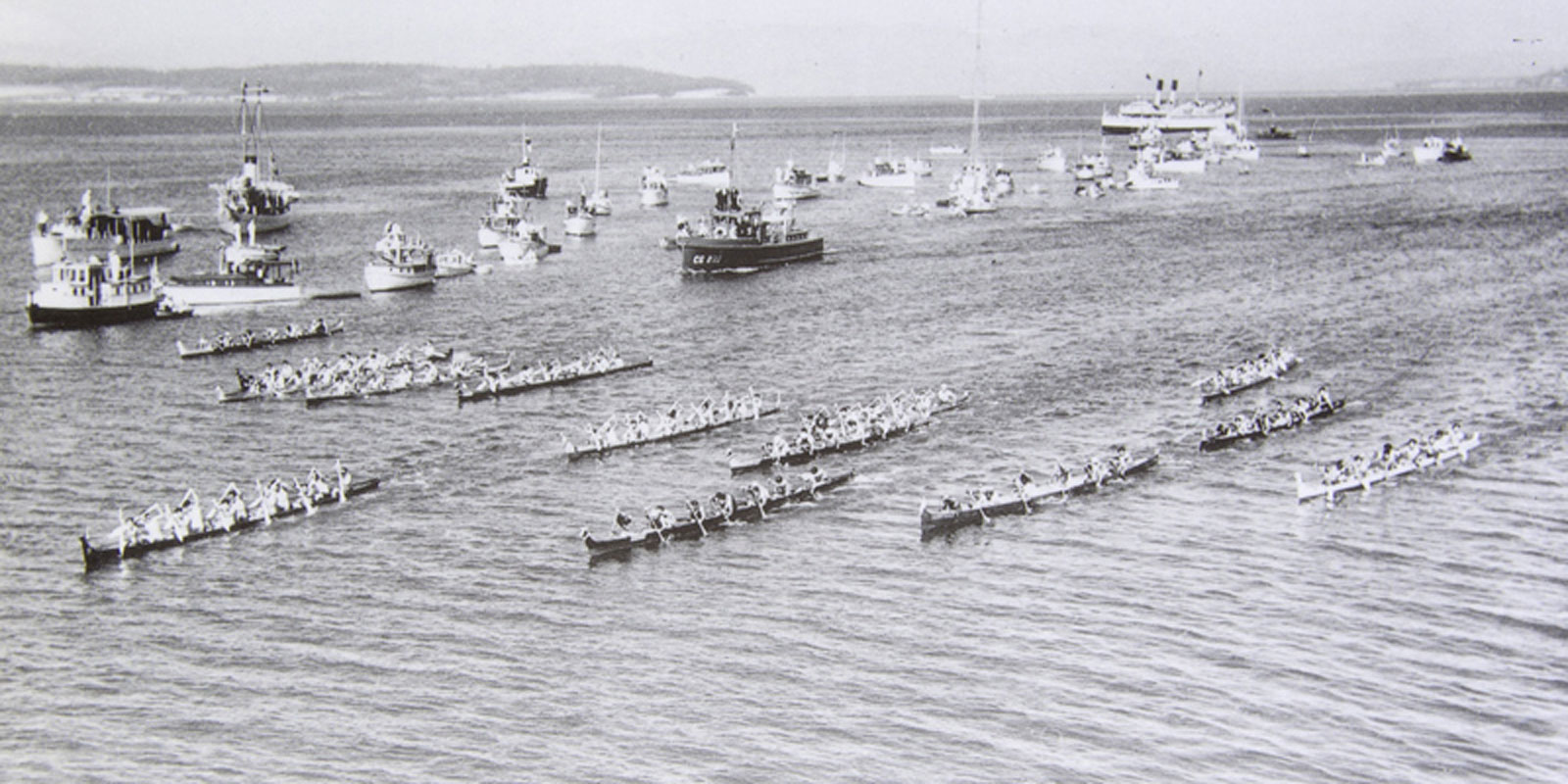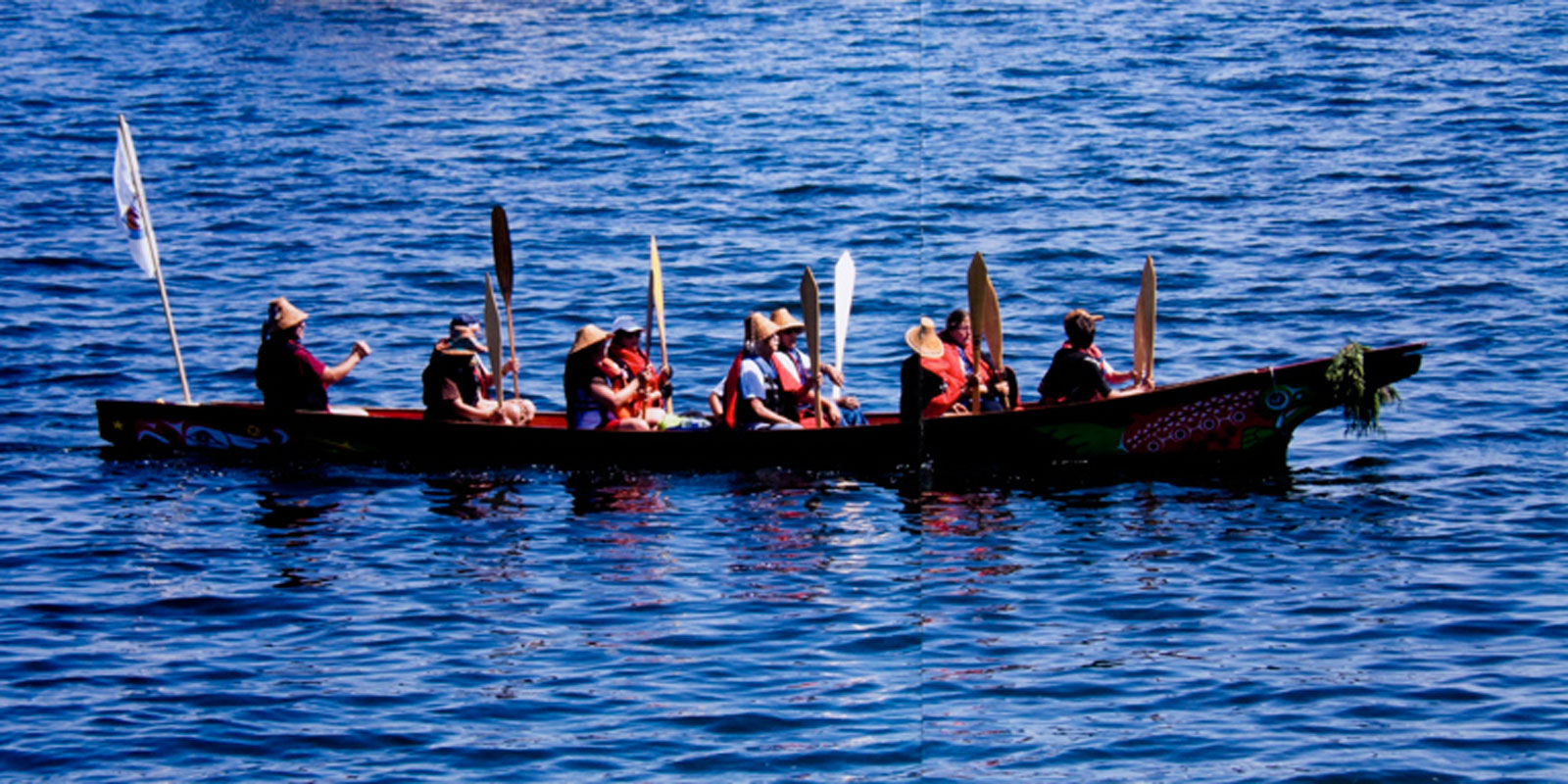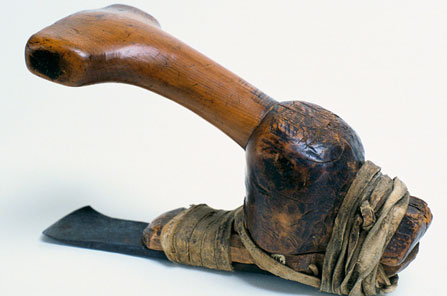
Coast Salish Adze
Skokomish elbow adze, Burke Museum cat. no. 18, collected by Rev. Myron Eells for the World's Columbian Exposition, 1893.
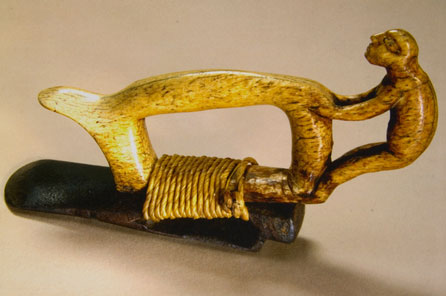
Quinault D-adze
This D-adze belonged to Captain Mason, a Quinault leader, who used it for making canoes. According to Oliver Mason, the great-grandson of Captain Mason, ‘The little figure represents the spirit that helped carve the canoes. He was a helper and when they’d get tired, he'd help them keep going.’
Canoe Carving
Until the early 20th century, the main method of travel on the Northwest Coast was by canoe, and many different styles of canoes were used for different purposes.
It is believed that the Coast Salish style of canoe may have been ancestral to the northern Northwest Coast canoes. It is characterized by a vertical cutwater, upswept bow and outswept stern. A groove is carved along the inside rim of the gunwale and a notch is cut in the bow.
Canoes were carved from a single log, hollowed, steamed and spread in order to increase the width of the canoe, and bring the bow and stern up (see spreading diagram below). In addition to the Coast Salish traveling canoe with the notched bow, the people of the Salish Sea also used the ocean-going west coast canoe type, also used by Chinookan, Makah, and Nuu-chah-nulth tribes, as well as the flat, dugout shovel-nosed river canoe to pole up shallow rivers.

The Coast Salish people used three basic types: shovel nose canoes for river travel (top), Salish style canoes for travel, fishing, and hunting in the Salish Sea (middle), and Westcoast (or Nuu-chah-nulth) style canoes for long distance and ocean travel (bottom).

Canoe changes in spreading: top, typical Puget Sound canoe after spreading; bottom, typical Puget Sound canoe before spreading.
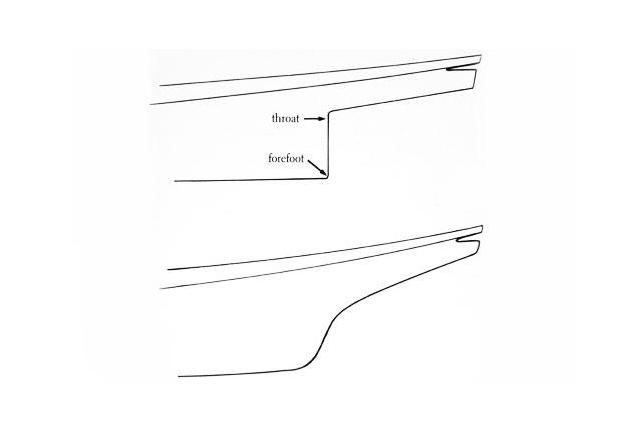
Coast Salish canoe bow diagrams: top, Northern Gulf with vertically compressed prow and deep, angular cutwater; bottom, Puget Sound with slanted prow and rounded cutwater.
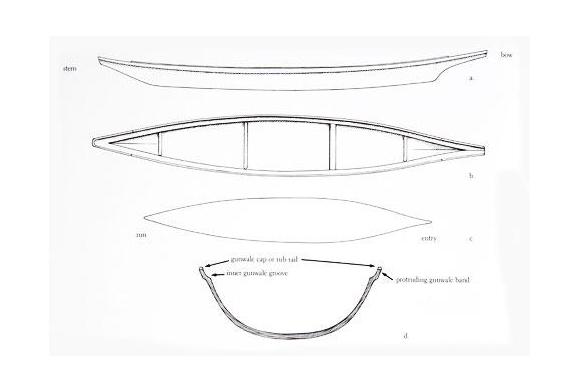
This diagram shows the features of the Puget Sound-Georgia Strait Salish canoe, based on Burke Museum canoe #1-167. From top: side view; view from above; waterline showing fine entry and run; cross section amidships.
Canoe Journeys
Motor vessels largely replaced cedar canoes on the coast in the early 20th century, but canoe racing remained a popular social event for Coast Salish tribes. Since the first Paddle to Seattle event that took place in conjunction with the Washington State Centennial celebration in 1989, canoe journeys have become an annual event and have inspired the revival of traditional traveling canoes carved of cedar logs that are steamed and spread in the traditional way.
Canoe journeys also inspire the production of ceremonial regalia such as woven robes, cedar bark hats, and the carving of canoe paddles.
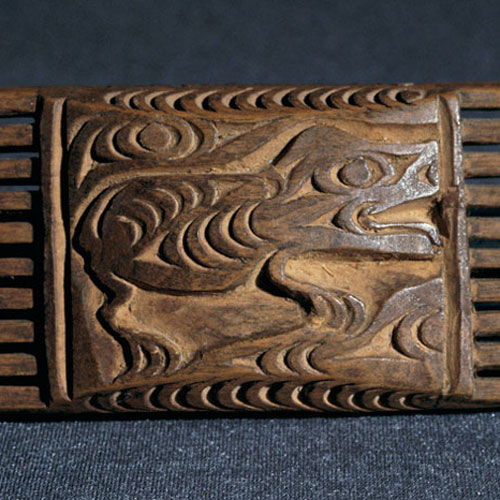
See More Coast Salish Art
Continue exploring the history of art in this region, what makes Coast Salish art distinctive among the many regional Northwest Coast styles, and the vitality of contemporary Coast Salish art.
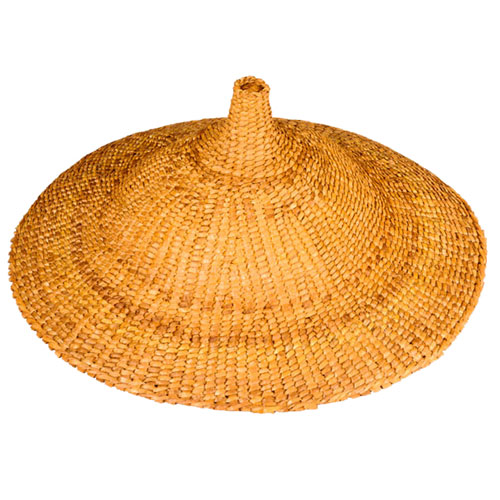
Additional Coast Salish Art Resources
Search additional resources related to the First Peoples who speak the Coast Salish language.
